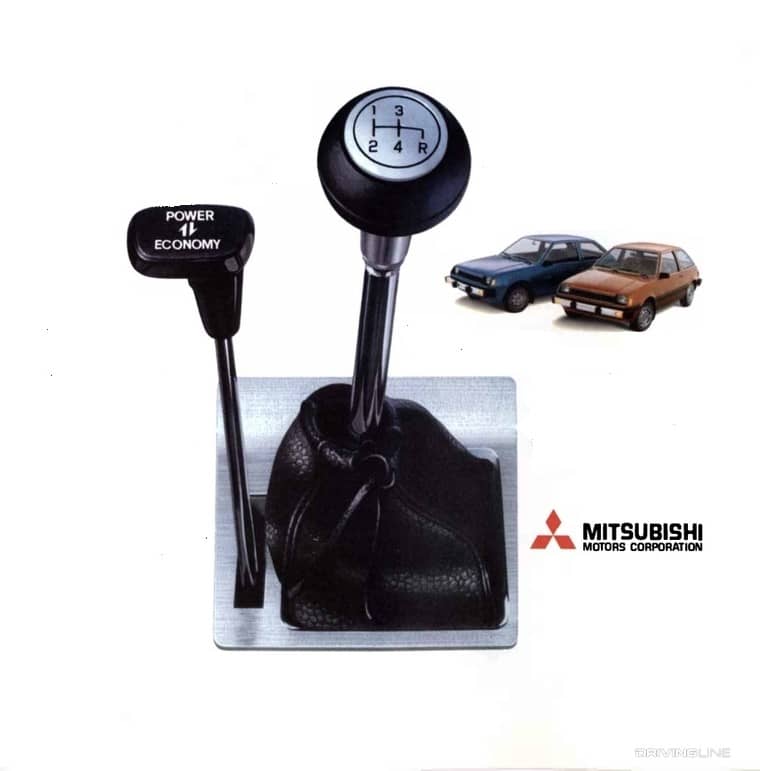The Mitsubishi Twin-Stick Super Shift Gave Manual Transmission Buyers Two Shifters And Doubled Performance Potential
In the world of automotive performance, two is almost always better than one. Dual exhaust, two locking differentials, a pair of spoilers stacked on top of each other on the trunk—well, you get the picture. Very rarely, however, are drivers treated to not one, but two shifters sticking up out of a vehicle's center console, a sight strange enough to confound even the most experienced manual transmission fan.

Such was the case with the Mitsubishi Super Shift, a manual gearbox that attempted to double your pleasure by giving you a pair of gear selectors to play with. Sold as the 'Twin-Stick' in certain markets, the concept was intended to split the difference between sporty driving and frugal fuel sipping, executed with the kind of oddball flair that only the 'we'll try anything to sell cars' '80s could have come up with.
Turning Lemons Into Lemonade
At the end of the 1970s Mitsubishi was still working on cracking the U.S. market, and as was the case with a number of European and Japanese import brands at the time, it figured that appealing to America's love of novelty might be a good path towards profitability in the coming decade. After all, from the company's perspective the almost-here 1980s were shaping up to be an era where unusual often equaled innovation in the eyes of automotive enthusiasts, a mindset that gave birth to digital dashboards, convertible pickup trucks, and of course, the ultra-weird Hurst Lightning Rods shifter system.

The development of the Super Shift technology also stemmed from an unusual engineering choice made by the company's engineers as Mitsubishi pushed front-wheel drive platforms to the forefront. Rather than develop drivetrains specifically for the new Mirage, which appeared in 1978, the brand elected to borrow from its existing rear-wheel drive stockpiles. This meant stuffing engines that had been designed for longitudinal deployment into bays that only accepted horizontal placement, a move that required the transmission to be yoked to a transfer case in order to power the front wheels.

Engineering kludge? Sure—but placing the transfer case directly underneath the motor opened up an unusual opportunity to try something that, well, no one else had even considered. Because the awkward drivetrain setup required a countershaft, Mitsubishi's engineering team decided to add another gear set to the design, effectively creating a 'pair' of selectable ratios out of what had initially been a simple idle shaft.
Awkward In Practice
What did this mean for drivers? If you believed the Super Shift advertisements, it meant that the Mitsubishi Mirage had 8 forward gears. From the driver's seat, though, pilots were left to puzzle over what looked like a traditional four-speed manual shifter with a secondary stick jutting up beside it that bore the labels 'Power' and 'Economy' to describe its two positions.

With the second stick set to 'Power' drivers had access to the car's most aggressive ratios, while 'Economy' switched things up to emphasize fuel savings over acceleration (with a light on the dashboard telling you which mode the gearbox was in). Unfortunately, in actual driving it was difficult to move through all 8 forward speeds, because it asked owners to operate both sticks at the same time as they staggered through each successive ratio.

As a result, the unit was often treated as an overdrive, with the 'Power' mode initially selected and then shifted into 'Economy' when cruising along in fourth gear. In case you're wondering, the setup also applied to reverse, which meant there were a pair of gears available for those who wanted to extend the amount of time they spent backing up.

If you've ever driven an 18-wheeler or other commercial truck, these concepts might sound quite familiar, as similar shift patterns are common in heavy duty vehicles. That being said, for a passenger car it was unheard of, and aside from bolt-on overdrive setups, very few manufacturers has ever marketed anything similar (with Subaru's dual range gearbox for the Forester SUV a notable exception).
Turbo Twin-Stick
The Mitsubishi Mirage was eventually exported to the United States, where it was also sold as the Dodge Colt and the Plymouth Champ. A modest four-cylinder engine provided between 70 and 80 hp, depending on the trim, but eventually a turbocharged version of the car—the GTS—dropped 102 horses into the Twin-Stick setup, which made the morning commute a little less sleepy (although 0-60 mph times still ticked over the 10 second mark).
Certainly, it didn't delivery anything like the performance promised by multi-stick ratchet shifters found on drag cars.

By the mid-'80s Super Shift had been wiped from the options sheet, as the number of fuel efficient hatchbacks and sedans grew and improved engine management technology removed the need for transmission trickery to help reduce the monthly gas bill.

So ended the strangest chapter in manual transmission history, an ode to the lengths engineers would go to not only use off-the-shelf parts, but give them a weird twist to help marketing move as much metal as possible.











